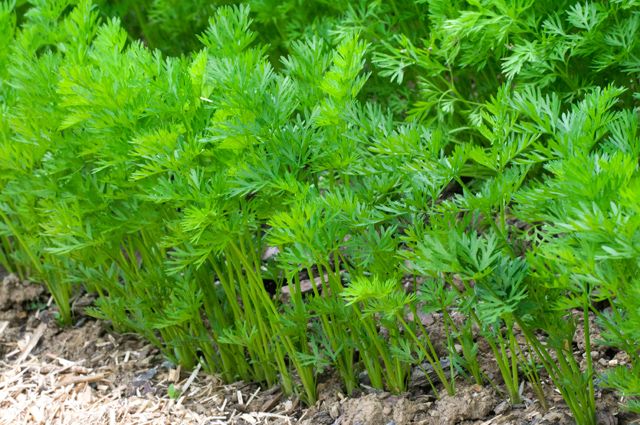Tips on how to properly thin out carrots
Thinning nuances
First, let's see why it is still important to carry out this procedure for a given culture. In the process of growing carrots, more and more space is required for a comfortable location of the root crop in the ground. If the bushes grow too close to each other, then the carrots will begin to deform and will not gain the necessary weight, even if there is sufficient watering and fertilization.
Some housewives use little tricks that save them from thinning in the future. For example, you can mix carrot seeds with river sand for even sowing, or make a mixture of radish and carrot seeds. The radish ripens earlier and you rip it out all before the carrot roots begin to pour. Thus, there will be enough space in the garden for carrots.
If you sow the seeds in the usual way and they sprout very thickly, you will have to take some time to learn how to thin out the carrots. In total, during the growing season, this procedure is carried out twice. The first thinning is planned at the time of the appearance of the first shoots. You don't have to wait long. It is enough for 2 leaves to look out onto the surface. Moisten the soil well before pulling on excess seedlings to help the roots come out more easily.
It is convenient to carry out manipulations with garden tweezers. You need to pull out the shoots in a straight up direction so as not to damage the neighboring plants. The root system of the sprouts is practically absent and, if handled not carefully, branches and deformations may appear in the future. Gaps of 3-4 centimeters are left between the bushes. After the procedure, the beds are moistened with water at room temperature, the irregularities are pressed down and the aisles are loosened. Excess shoots do not have to be thrown away. They can be used as seedlings by highlighting additional beds.
The next thinning of carrots is planned at the time when the stems grow up to 10 centimeters. Also moisten the soil before starting the procedure so as not to spoil the nearby bushes. The distance between carrots after 2 thinning should be 6-7 centimeters. It should be noted that such adult sprouts are no longer suitable for transplantation, so they will have to be thrown away.
When thinning, it is important to take into account that after the procedure, essential oils of the culture are released into the air and this carrot smell attracts pests, especially carrot flies. To prevent contamination, throw torn bushes away from the area. In no case should you leave them in the beds.
For safety reasons, the second thinning is recommended late at night. Hot ground pepper will help scare away uninvited guests. They are sprinkled with a thinned bed.
It's also worth noting that by thinning the carrots, you can control their sweetness and size. For sweeter and richer root vegetables, leave 1 to 2 centimeters less space than indicated above. If the main goal is to get the largest possible marketable carrots, do not spare the sprouts and leave enough space.
Video "How to grow carrots"
In the video, you will learn not the easiest way to plant carrots, especially since it must be properly thinned out. How to do this, see the video.


